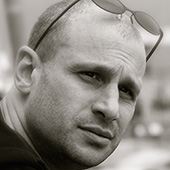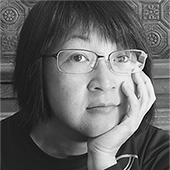Transitioning
Dan left the conference in China feeling a little sad and communicated his feelings to Jo on their return to Hong Kong. He felt the need for a clear plan on how we could help ourselves get unstuck. Was it that Dan was no longer interested in User Experience or that our conversations about User Experience had all started to sound the same? Or did we need to seek new horizons on our journey ahead? We continued reading—referring back to our books, articles, and project learnings from the past 20 years to see where we might find any clues that would help clarify our path ahead—but this did not seem to be enough. So we started considering how UX professionals in general might handle such professional angst.
Answers
One option is to keep doing what you have been doing until you encounter new opportunities on your current path that shed some light on your dilemma. But the problem with this approach is that, without realizing it, you may stay fixed on the same path too long and not keep your eyes and ears open to new ideas and interesting opportunities. You may also go down that same path so quickly that you find yourself repeating the same patterns, making the same mistakes, and listening to the same ideas—and find yourself unable to appreciate new opportunities that are right in front of you and would let you change course safely. This reminded us of the “great tragedy of speed”:![]()
“The great tragedy of speed as an answer to the complexities and responsibilities of existence is that very soon we cannot recognize anything or anyone who is not traveling at the same velocity as we are. We see only those moving in the same whirling orbit and only those moving with the same urgency. Soon we begin to suffer a form of amnesia, caused by the blurred vision of velocity itself, where those germane to our humanity are dropped from our minds one by one. We start to lose sight of any colleagues who are moving at a slower pace, and we start to lose sight of the bigger, slower cycles that underlie our work. We especially lose sight of the big, unfolding waveform passing through our lives that is indicative of our central character.”
Finding Healthy Alternatives: Paida and Lajin
It seemed that going faster and doing more of the same was not going to help us, so we definitely needed to seek help from outside our community of practice. Perhaps we could learn something from Chinese medicine? Jo found a book, Paida and Lajin Self-Healing, which describes a simple technique of “carpet-bombing” your body to cleanse its 14 meridians or energy channels from all directions at once—thus, helping to eliminate all of your known and unknown diseases holistically instead of treating them according to the different divisions of medicine.
The learnings from this book seemed to resonate with our thinking as it pertains to our consulting, working for businesses that also seemed be stuck when it came to delivering great user experiences. Obstacles to holistic thinking in businesses include, but are not limited to the following:
- silos—creating divisions between people who should be speaking to each other
- management structures—in which people feel that they cannot speak to other people because a manager is blocking their path
- no time to think or plan—in situations where people are working so hard to meet their short-term goals and implement their solutions so quickly—see “the great tragedy of speed”— that they have no time to lift their heads to see the path ahead or plan what they should really be working on
- no customer truth—where siloed businesses are creating different versions of customer truth, leading to false assumptions about how to meet customers’ needs and unconnected customer data that prevents businesses from looking at these so-called truths holistically
- too much rational thinking—people spending so much energy on being business people that they forget how to communicate as human beings and instead speak in numbers—because they think that’s the language of business—or are unable to express themselves openly and connect with new and better ideas
We decided to try out Paida on ourselves, patting and slapping different areas of the body, as well as Lajin, stretching our tendons to help our flow of thinking and enabling us to be open to new ideas. This also gave us some surprising clues about how businesses get stuck, resulting in toxic systems and cultures that are not receptive to new thinking. Perhaps we needed to answer the following questions:
- How could we help businesses to get rid of toxins and prevent disease in their systems?
- What should we consider in evolving our practice framework to encourage healthier business behaviors?
- What UX or other methods would help?
Maybe our current toolkits were not enough. Perhaps we needed to activate the system’s self-healing power naturally to enable us to see more clearly and holistically, so we could help our clients to design and deliver great user experiences. This line of thought was helping, but it seemed to be only a small step toward discovering our own new practice framework. We needed to speak to smarter and more experienced people and test out our ideas through ongoing conversations. We needed to read more.
Reaching Out to Friends
We decided to reach out to our friends Bas and Geke from STBY—who are founders of the Global Design Research Network![]() and GOOD13
and GOOD13![]() —to take time away from their projects and join us in Hong Kong, as well as for a trip to Chengdu, in mainland China, over December 2012 and January 2013. During our time together, we enjoyed relaxed conversations about our work, unpacking opportunities, venting our shared frustrations, connecting related topics and perspectives from outside design, and touching on our toolkits and where we think our practice is going. And we met some pandas in Chengdu!
—to take time away from their projects and join us in Hong Kong, as well as for a trip to Chengdu, in mainland China, over December 2012 and January 2013. During our time together, we enjoyed relaxed conversations about our work, unpacking opportunities, venting our shared frustrations, connecting related topics and perspectives from outside design, and touching on our toolkits and where we think our practice is going. And we met some pandas in Chengdu!
The natural flow of our conversations allowed us to share stories, helping us to reflect on and make sense of what our new thinking meant for our respective practices—both in the regions in which we each work and globally—and to better understand how each of us wanted to help our clients, now and in the future. We began to move away from our habitual ways of looking at our work and let go of the language that we had been using. We gave ourselves permission to pursue the freedom of thought that would enable us to see things anew. This felt refreshing.
Helping each other along the way, we came back to Apogee Studio overflowing with new energies, ideas, and stories that we transferred onto our wall. The poster on the wall became the canvas. When Bas and Geek returned home, we continued to add Post-its to our wall as our thinking matured further. Without our time together with Bas and Geek, we would not have had something tangible to work with—or the opportunity to move from disconnected ideas in our heads to looking at things holistically. This gave us permission to slow down, reflect, and look at the path ahead. The canvas started to show the impact that we wanted to have on the people we work with, and it provided just the inspiration and invigoration we needed to trigger more conversations, both locally and in our travels throughout 2013.
We were feeling less stuck!

